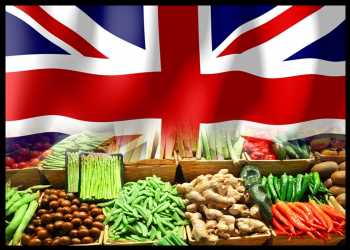
UK Consumer Price Inflation Climbs Back To July High Of 10.1%
October 20, 2022UK consumer price inflation accelerated more-than-expected in September, to reach its recent high marked in July, led mainly by rising food prices, preliminary figures from the Office for National Statistics showed Wednesday.
The consumer price index rose 10.1 percent year-on-year following 9.9 percent increase in August. Economists had forecast 10.0 percent inflation.
The latest figure is the highest annual CPI inflation rate in the National Statistic series, which began in January 1997, the ONS said.
Inflation is slightly below the peak projected by the Bank of England. At the October meeting, the BoE had forecast inflation to ultimately reach just under 11 percent and to remain above 10 percent over the following months.
Data showed that inflation for food and non-alcoholic beverage prices reached a 42-year high of 14.6 percent in September.
Compared to the previous month, the CPI climbed 0.5 percent, same as in August. Economists had forecast a 0.4 percent rise.
Rising food prices made the largest upward contribution, while the continued fall in the price of motor fuels made the largest, partially offsetting, downward contribution to the change in the annual inflation rates between August and September, the ONS said.
Core inflation, which strips out prices of food, energy, alcohol and tobacco, accelerated to 6.5 percent in September from 6.3 percent in August. Economists had forecast a rate of 6.4 percent.
On a month-on-month basis, the core CPI rose 0.6 percent in September after a 0.8 percent increase in August. Economists had forecast a 0.5 percent climb.
The ONS also reported that input price inflation slowed for a third straight month in September. Producer input prices rose 20.0 percent annually following a 20.9 percent increase in the previous month. Economists had expected the rate to ease to 18.8 percent.
Output prices rose 15.9 percent year-on-year, which was slower than the 16.4 percent climb in August. Economists had forecast a 15.7 percent increase. Factory-gate inflation eased for a second straight month.
Crude oil and petroleum products provided the largest downward contributions to the change in the annual rates of input and output inflation, respectively, the ONS said.
Food products provided the largest upward contribution to the output price annual rate, the ONS said.
On a monthly basis, input prices rose 0.4 percent in September, partly reversing a 0.9 percent fall in August. Economists had forecast a 0.4 percent decline.
Imported input prices increased 3.2 percent monthly on the month to September versus a 1.2 percent fall in August. The annual rate picked up to 21.1 percent from 18.7 percent in the previous month. This was the first acceleration since June 2022, where there was a record high of 21.3 percent.
Output prices rose 0.2 percent monthly in September following a 0.1 percent increase in the previous month. Economists had forecast a 0.3 percent gain.
A separate report from the ONS showed that house price inflation slowed in August due to the sharp rise in prices in the same month last year following changes in the stamp duty holiday.
House price growth eased to 13.6 percent in August from 16.0 percent in July. The average house price was GBP 296,000 in August.
The UK economy is undergoing a severe cost-of-living crisis, which is expected to turn worse as households and businesses brace for soaring energy bills during winter.
This week’s U-turn on tax measures, announced in the September 23 mini-budget, by the new chancellor Jeremy Hunt served to soothe the markets slightly.
Meanwhile, in comments made over the last weekend, Bank of England Governor Andrew Bailey signaled that policymakers were ready to raise the interest rate aggressively, if necessary, to bring inflation back to the bank’s 2 percent target.
ING Economist James Smith said the hawks at the BoE will still be acutely worried about the value of the pound and the potential for any further weakness to add to medium-term inflation.
It is more likely that Bank Rate peaks between 3.5-4 percent by early next year, below market expectations, the economist added.
Source: Read Full Article


